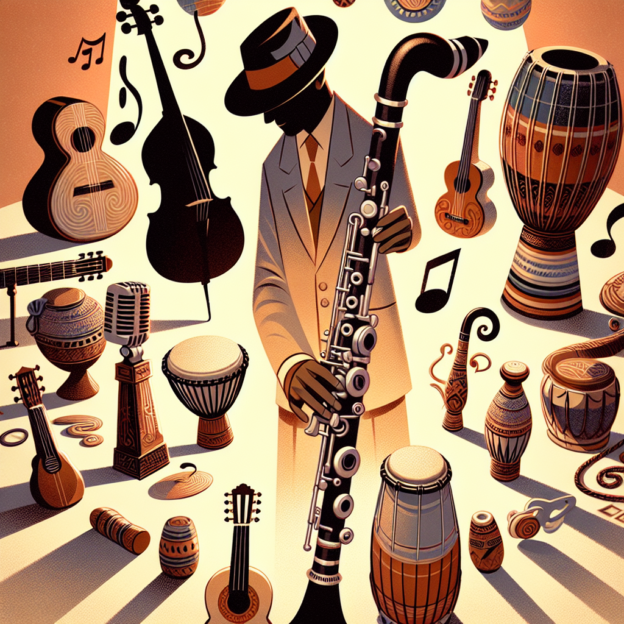The Clarinet in Ethno-Jazz: Bridging Cultures Through Sound
Have you ever stumbled upon the exciting mix of cultures and sounds known as ethno-jazz? This genre combines traditional music from around the world with jazz's spontaneity, creating a captivating musical experience. At the heart of this fusion, one instrument often takes center stage: the clarinet. Let's explore the fascinating role of the clarinet in ethno-jazz!
What Makes Ethno-Jazz Unique?
Ethno-jazz isn't just about mixing jazz with world music; it's about blending musical identities. This genre takes various cultural music styles and infuses them with jazz's improvisational spirit. The clarinet steps into this musical melting pot, adding depth and texture to the sound.
The Clarinet's Versatility in Ethno-Jazz
The clarinet's warm, rich tone can mimic various ethnic woodwinds, making it ideal for ethno-jazz. Famous clarinetists like Don Byron and Anat Cohen have made their mark by incorporating sounds from Klezmer to Brazilian choro into their playing. Their work shows how the clarinet can effortlessly move between genres and cultures.
| Clarinetist | Notable Ethno-Jazz Contributions |
|---|---|
| Don Byron | Klezmer fusion, Afro-Caribbean influences |
| Anat Cohen | Brazilian choro, Mediterranean sounds |
| David Krakauer | Klezmer-jazz fusion, Eastern European influences |
Adapting Your Playing Style
As a clarinetist, you might want to explore how to adapt your playing to different cultural contexts. For example, when playing in a North African style, the clarinet often uses double-tonguing techniques that mirror Berber vocal styles. By incorporating these techniques, you can create an authentic sound that resonates with listeners. It's not just about playing notes; it's about telling stories through music!
The Art of Improvisation in Ethno-Jazz
Improvisation is at the core of jazz, and in ethno-jazz, it takes on unique flavors depending on the cultural background of the music. This genre offers a chance to mix scales, rhythms, and melodies from various traditions with jazz's improvisational freedom. To improve your skills, listen to ethno-jazz recordings and analyze how musicians blend scales from their cultural roots while maintaining the jazz spirit. Striking this balance is crucial!
Expanding Your Repertoire
Consider including pieces that showcase various cultural heritages in your performances. You might explore compositions inspired by Afro-Cuban rhythms or Klezmer folk tunes, both of which provide excellent opportunities for the clarinet. Playing alongside instruments from different cultures, such as a West African djembe or a Middle Eastern oud, can create a rich musical dialogue that captivates audiences.
The Importance of a Quality Instrument
Playing ethno-jazz requires a high-quality instrument. Clarinets made by respected manufacturers like Martin Freres offer enhanced sound and the flexibility to explore various styles easily. A well-crafted clarinet becomes your reliable companion as you embark on musical journeys across cultures. These instruments provide rich tones and improved tuning stability, which is vital when experimenting with different scales and harmonies.
Understanding Cultural Context
It's important to study the cultural background of the music you're playing. Musicians who understand the history and significance of the pieces can interpret and perform the music more authentically. This knowledge adds depth to your performances and helps you connect with the essence of the music.
The Power of Collaboration
Don't overlook the value of collaboration! Playing with others is one of the most rewarding experiences in music. Look for musicians who specialize in different styles and create your own ethno-jazz fusion. The synergy that develops in these collaborations often leads to unforgettable performances. You might even discover new sounds you hadn't considered before!
Embracing Continuous Learning
Staying current with new trends, compositions, and techniques is crucial in this genre. Ethno-jazz is constantly evolving, with each musician adding their unique touch. As a clarinetist, keeping up-to-date will help you stay relevant in this dynamic musical landscape.
Conclusion
The clarinet plays a unique role in ethno-jazz, acting as a bridge between traditional music and modern improvisation. So, pick up your clarinet, find your rhythm, and get ready to explore a world brimming with diverse musical colors and sounds!
Table of Contents
- The Clarinet in Ethno-Jazz: Bridging Cultures Through Sound
- What Makes Ethno-Jazz Unique?
- The Clarinet's Versatility in Ethno-Jazz
- Adapting Your Playing Style
- The Art of Improvisation in Ethno-Jazz
- Expanding Your Repertoire
- The Importance of a Quality Instrument
- Understanding Cultural Context
- The Power of Collaboration
- Embracing Continuous Learning
- Conclusion







